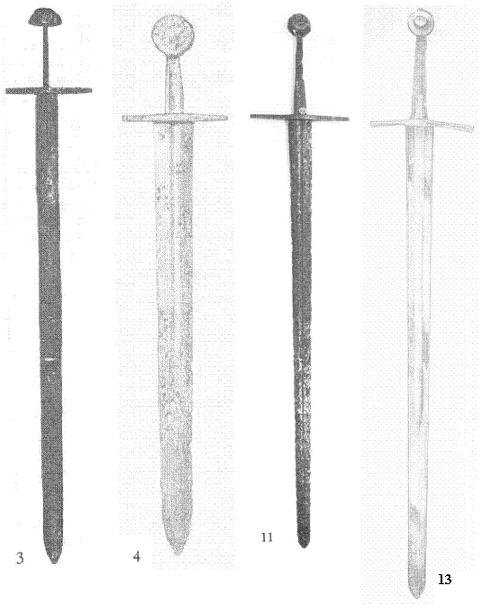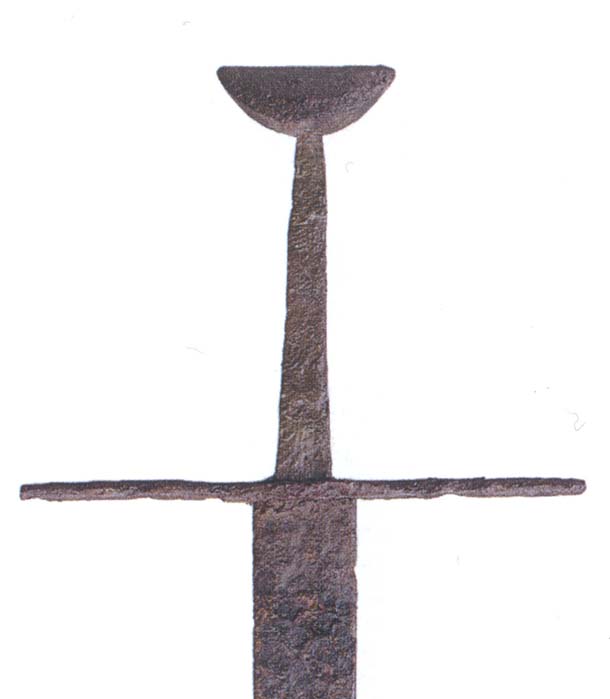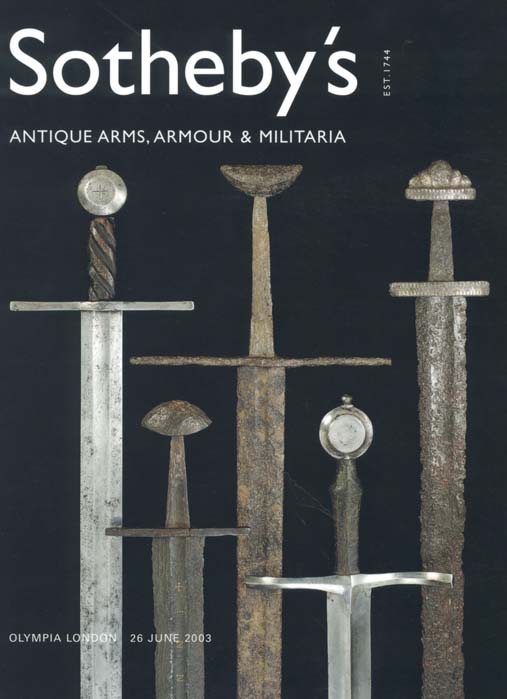Posts: 782 Location: Upstate New York
Mon 13 Nov, 2006 11:04 am
Hello all!
Chad,
Thanks for posting that! I have an interest in early examples of "great swords". They did sometimes occur earlier than was once thought. There are a few twelfth-century, or possible twelfth century, examples in
Oakeshott's
Records of the Medieval Sword. His "Appendix B" even gives a fairly in-depth discussion about why the inlays in at least one "great sword" probably date it to the first half of the twelfth century. He argues that the "handwriting" on the inlays is very similar to other swords that date circa 1120.
I've included pictures from
Records of the Medieval Sword showing these early examples of "great swords", or type XIIIs of the same general style as the larger "great swords".
Number 3 is XIII. 3 from
Records. Oakeshott dates this sword circa 1200-50, but notes that the hilt form suggests a century earlier. Its blade length is 32 inches, so it's more of a "general" type XIII than a true "great sword". (Oakeshott defines a true "great sword" as a sword with a long blade and a long hilt, but these are all swords that are a bit larger than the normal sword of the period.)
Number 4, XIII. 4 in
Records, is another "general" type XIII that Oakeshott dates circa 1150-1200. It has a broad blade that's 33 inches long.
Number 11 (XIIIa. 11 from
Records) is a "great sword" with a long and narrow fuller, reminiscent of the blade on an Oakeshott's type XI. The blade is 35 inches long. Oakeshott dates this example circa 1200-50, or more likely 1100-50. He points out that the faceted pommel is of a type found in the Leppaaho Viking swords, and
gaddhjalt type cross was used by the Vikings. This could make the earlier date far more likely, especially since it seems to be a "great sword" version of a type XI (which he dates circa 1100-1175).
Number 13 is a "great sword" with a shorter blade than most (33 1/2 inches), but a grip length that firmly places it in the "great sword" category. It's XIIIa.13 in
Records. Oakeshott dates this one circa 1120-50, based on an examination of the inscriptions. He says the inscriptions imply a date of circa 1120, as compared to other examples. This is a significantly early great swords, but he points out in "Appendix B" in
Records that there are earlier examples of long-bladed and long-hilted swords, including examples in art from the 2nd century AD to the 12th!
There were also long-bladed but short-gripped swords. In
Sword in Hand, Oakeshott mentions (with photo, but I can't post that one) that a sword found near Pontirolo of circa 1150 has a huge blade 40.5 inches long! The whole thing is 47.25 inches long and weighs just under 5 pounds! This isn't a true "great sword" because of its short grip, but it is longer than the "normal" sword of the period. In the same work, Oakeshott again mentions that there is evidence pointing to the use of the true "great sword" as early as the beginning of the 12th century.
Here are the pictures from Oakeshott's
Records of the Medieval Sword:
 Attachment: 37.01 KB
Attachment: 37.01 KB

Early Type XIII and Type XIIIb swords from Records of the Medieval Sword.




